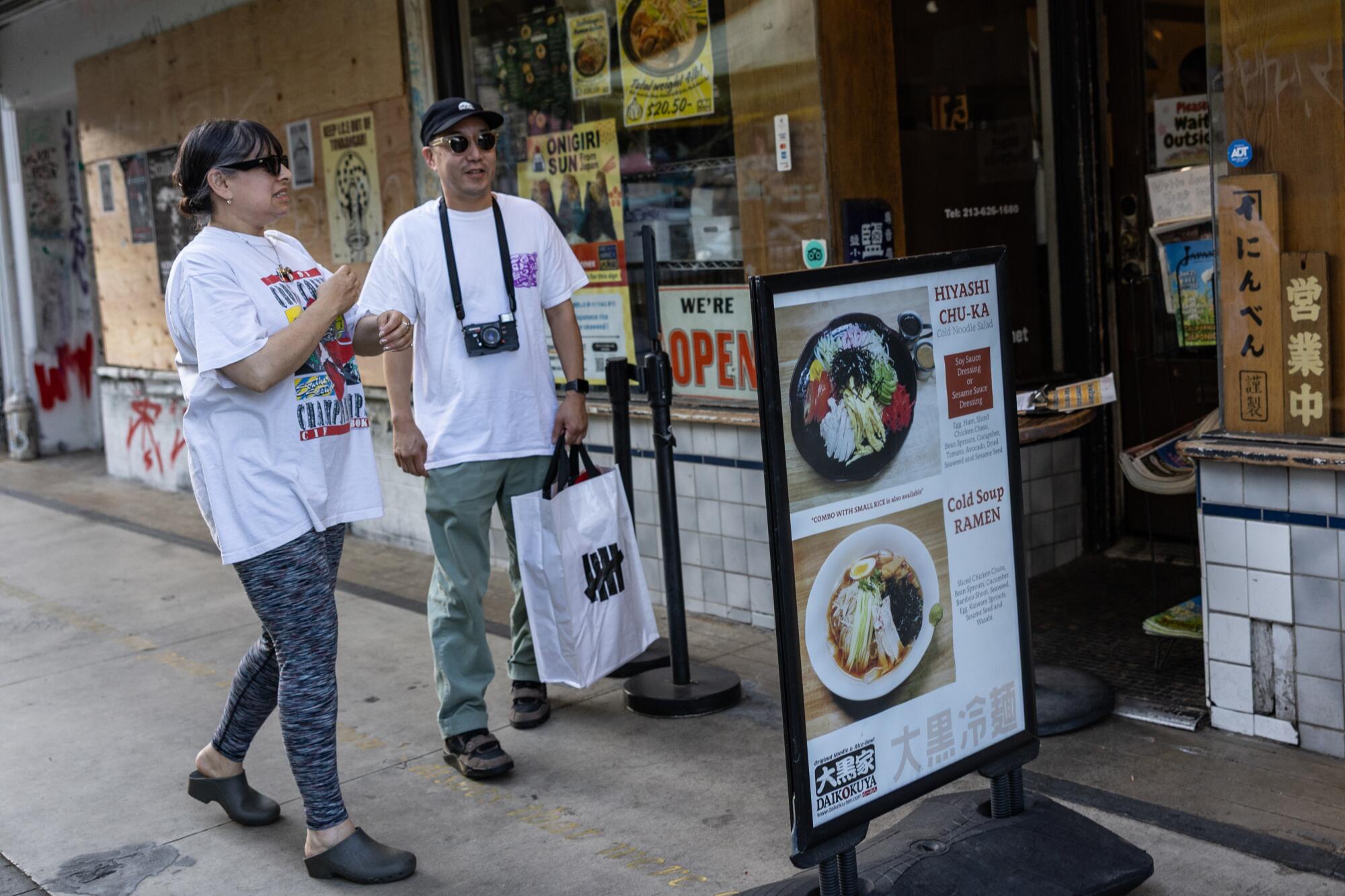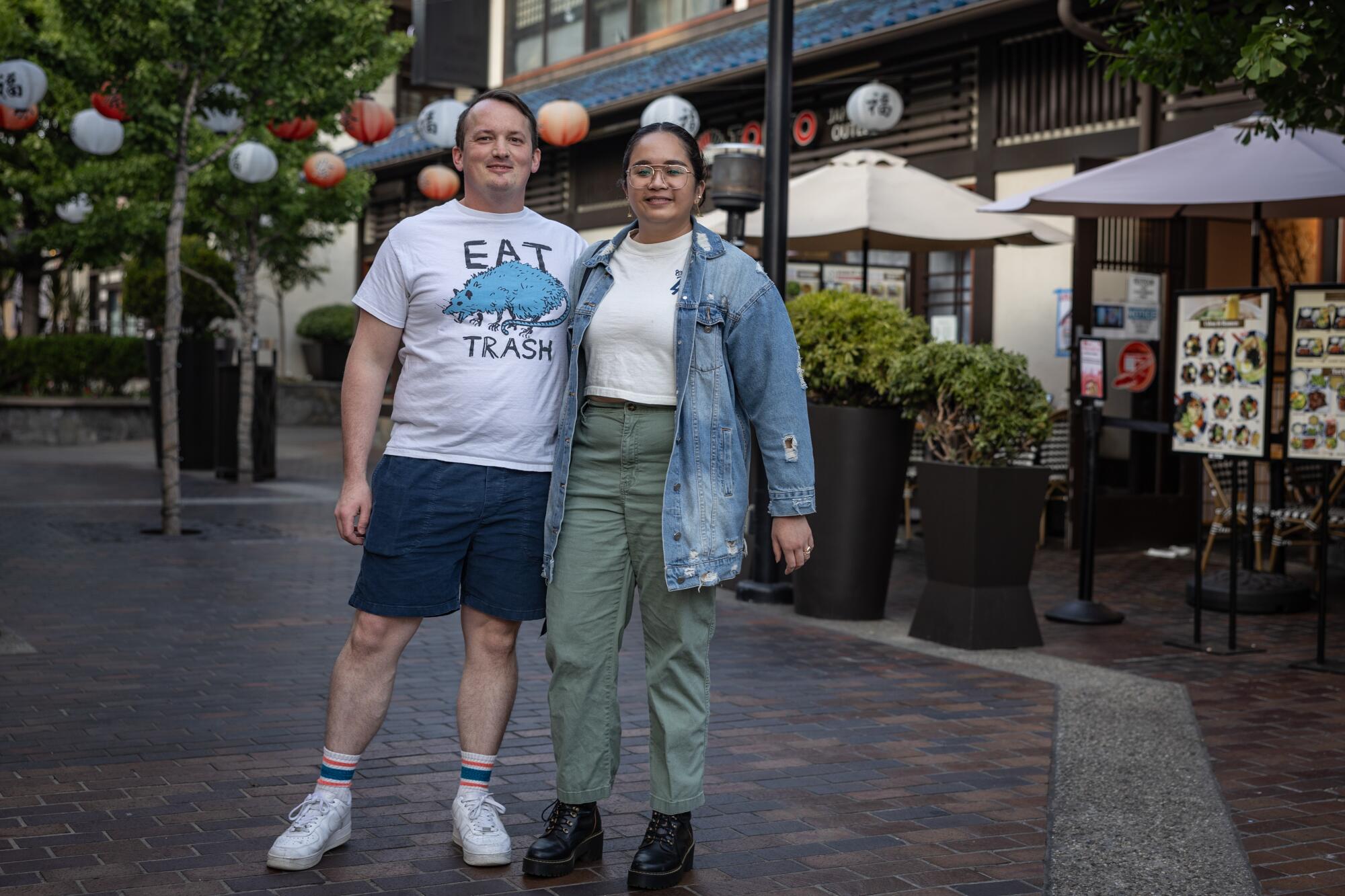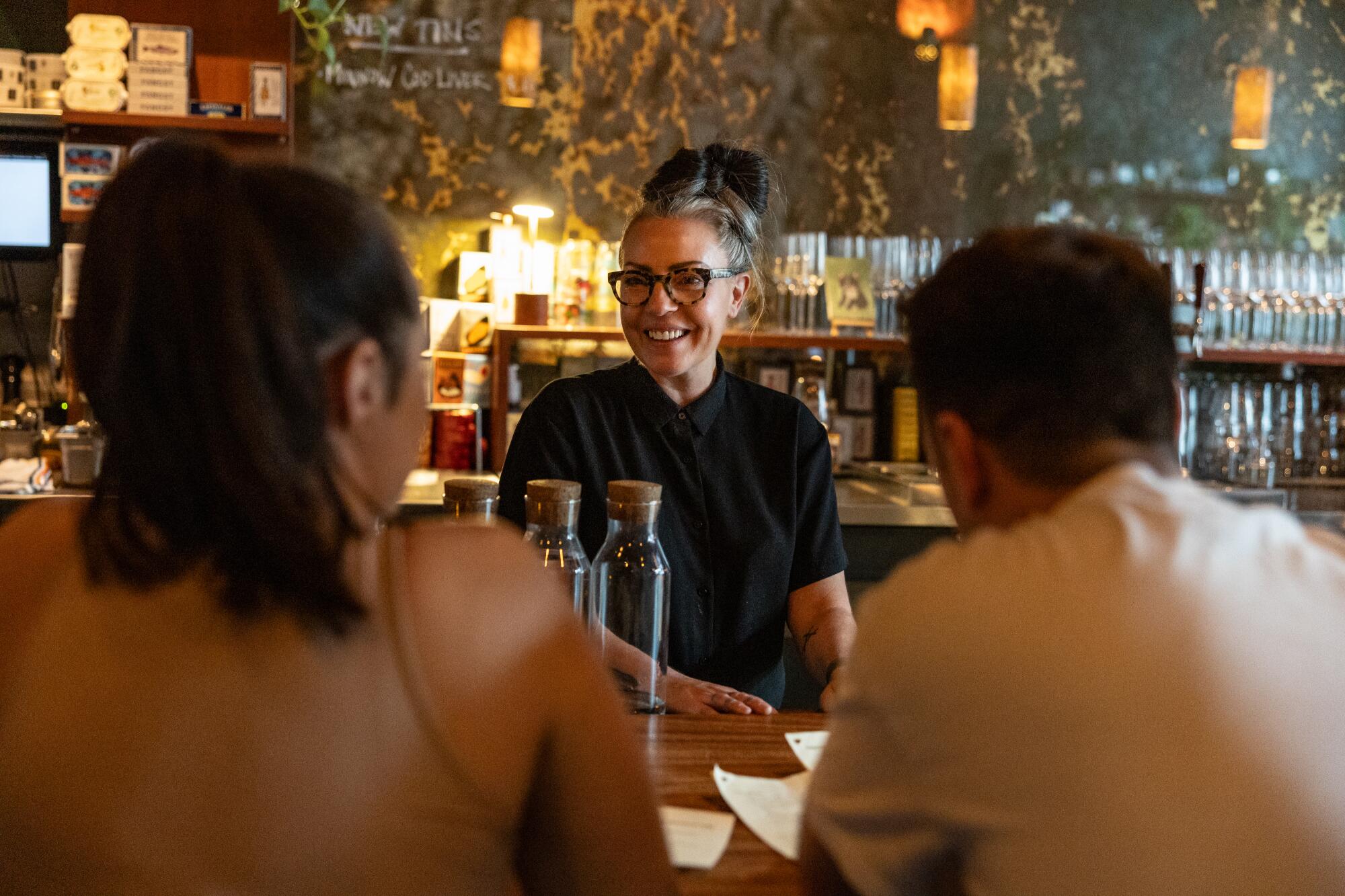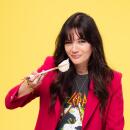
- Share via
- Little Tokyo, the epicenter of the recent protests over President Trump’s immigration policies, is showing signs of life again.
- Even with the curfew lifted, restaurants are still struggling.
- I spent the last couple of nights eating in downtown Los Angeles. It’s safe, and the restaurants need our business.
It sounded like the alarm for a severe weather warning. At 8:19 p.m. on Monday evening, my phone blared with a public safety alert that a curfew was in place from 10 p.m. to 6 am. in downtown Los Angeles. It came just as I crested the hill on the south 110 Freeway that offers a sweeping view of the city below.
I was on my way to meet a friend for dinner at Kinjiro, a snug izakaya in the heart of Little Tokyo.
The area is one of the downtown neighborhoods most gravely affected by the aftermath of the recent demonstrations protesting President Trump’s immigration policies and the ensuing raids.

Mayor Karen Bass’ curfew, enacted a week prior in an effort to quell any chaos associated with the demonstrations, meant the streets were empty. It was the latest hurdle in an ever-expanding list of challenges for Los Angeles restaurants, which in the last five years have faced drastic drops in business from a pandemic, Hollywood writers’ strikes and fires.
All along 2nd Street, the windows and doors were hidden behind plywood. Graffiti featuring choice words for the police and Immigration and Customs Enforcement covered nearly every surface.
Normally bustling with tourists and downtown office workers, the historic food hall was nearly empty this week. Its staff and customers sound off on ICE raids, protests and loss of business.
The frequently bustling Japanese Village Plaza, where shoppers dine at a revolving sushi bar and stop for cheese-filled corn dogs, was desolate. When I made it to the izakaya, it was clear that they were closed. The windows had been boarded up and a security gate was pulled across the entrance.
We drove over to Bavel in the Arts District, curious to see if one of the city’s most consistently booked restaurants was feeling the effects of the curfew, which covered the area of downtown between the 5 and 10 freeways and from the 10 to where the 110 and 5 freeways merge.
You can probably measure the state of dining in Los Angeles by the fullness of the dining room at Ori Menashe and Genevieve Gergis’ Levant-leaning restaurant. A last-minute prime table at 8 p.m. on any other night? No chance. When we arrived as walk-ins, we found a patio that was mostly empty, sparse patrons at the bar and a dining room that felt devoid of the usual Bavel energy. A quick scroll through the week’s upcoming reservations on OpenTable showed multiple openings each night.
I drove home past curfew, expecting to see a checkpoint of sorts or maybe even an increased police presence. There wasn’t a single police car or protester. All the streets were open.
The 8 p.m. curfew, first issued on June 10, was changed to a 10 p.m. curfew on Monday. On Tuesday, the curfew was lifted altogether, but many downtown restaurants are still struggling to fill their dining rooms.

Just last week, Kato restaurant lost 80% of its reservations. Jon Yao, Ryan Bailey and Nikki Reginaldo’s Arts District tasting menu restaurant celebrates Yao’s upbringing in the San Gabriel Valley. It was named the No. 1 restaurant on the L.A. Times 101 List three times. Earlier this week, Yao won the James Beard Award for best chef in California. If there’s a destination restaurant in downtown Los Angeles, this is it.
On Tuesday, in light of the lifted curfew, the restaurant was still looking at a 70% drop in reservations for the upcoming week.
“The direct impact of the media’s portrayal of DTLA being unsafe, which it is not, has impacted Kato immediately, and we were forced to close two nights,” Bailey says.
L.A.’s restaurants and bars are struggling to recoup business losses from curfews and protests, closing for days and pivoting business models: ‘We don’t have any reservations.’
On Friday, around 20 of the reservations canceled were for dinners booked weeks and months in the future.
“I had two specific instances where the guest called to say they were canceling their upcoming trip to L.A. based on not feeling safe in L.A. anymore,” Bailey says.

“The optimist in me hopes that the curfew, especially given the lifting now, does not cause long-term damage to downtown,” says Cassy Horton, co-founder of the DTLA Residents Assn. The organization works to create a thriving urban community in downtown that supports new and existing residents in the area.
“This is why we have been advocating so strongly to make sure our small businesses can open up,” says Horton. “We need our neighbors across the region to really rally behind downtown right now because we need their support.”
Hours after the curfew was lifted Tuesday, downtown started to show signs of coming to life again.

Just before 7 p.m., a line began to form at Daikokuya in Little Tokyo. The small ramen shop is known as much for the perpetual wait as it is for its steaming bowls of tonkotsu ramen. It was a hopeful sight during a week of uncertainty, in an area that was the epicenter of the demonstrations.
“We checked with our friends who live right here and we were really mindful about coming tonight,” says Kevin Uyeda. He stood in line for ramen with fellow Echo Park resident Julie M. Leonard, both eager to make the short trip to Little Tokyo for dinner.
“I think there has been a lot of misinformation about the protests and the levels of everything,” says Leonard. “I don’t think the curfew was necessary. Most of the protests were peaceful.”

A few doors down, at Korean restaurant Jincook, the staff removed the boards covering the windows that afternoon.
“It’s safe to come here,” says Jincook server Hendrik Su. “We want people to know that we are open.”
At the Japanese Village Plaza, strollers rolled through the winding walkway with patrons sipping boba. Arts District residents Renee Sogueco and Chris Ciszek carried bags of leftovers from recent stops at Daikokuya and Fugetsu-Do, the more than a 100-year-old mochi and mango confectionery on 1st Street.
“Once we heard the curfew was lifted we wanted to come out,” says Sogueco. “We’ve been feeling really bad about it with all the immigrant-owned businesses being affected. Daikokuya was fairly busy, but not as busy as we’ve seen it.”

Ciszek’s parents decided to make the trip out from Virginia to visit, despite friends back home questioning the decision.
“People are seeing a lot of very curated images online,” says Ciszek. “They don’t reflect what’s been happening downtown. From what we’ve seen, the protesters have been happy, dancing, playing music, not violently disruptive.”
I took a short drive west to the South Broadway block that houses Grand Central Market and found people eating tacos on the tables that line the sidewalk. A few locals sipped glasses of wine at nearby Kippered, the wine and tinned fish bar from Lydia Clarke and Reed Herrick.
“With everything boarded up, it doesn’t feel inviting for tourists or people to come,” says Clarke. “We still need people from outside the neighborhood, so people don’t forget how great downtown is, how easy it is to come and pop around to a couple of places.”

With the curfew being lifted, many restaurants that closed, temporarily opened for lunch or moved to entirely new locations outside of downtown Los Angeles, started to announce that they would return to regular business operations.
Lasita, the Filipino rotisserie and wine bar in Chinatown, reopened for dinner. Steve and Dina Samson’s Italian restaurant Rossoblu, which operated as a pop-up in Playa Vista over the weekend, returned to dinner service at its Fashion District location recently.
“I know we deal with so much in downtown, but when things get harder, our hearts get bigger,” says Clarke. “I’m feeling really hopeful again.”
More to Read
Eat your way across L.A.
Get our weekly Tasting Notes newsletter for reviews, news and more.
You may occasionally receive promotional content from the Los Angeles Times.













